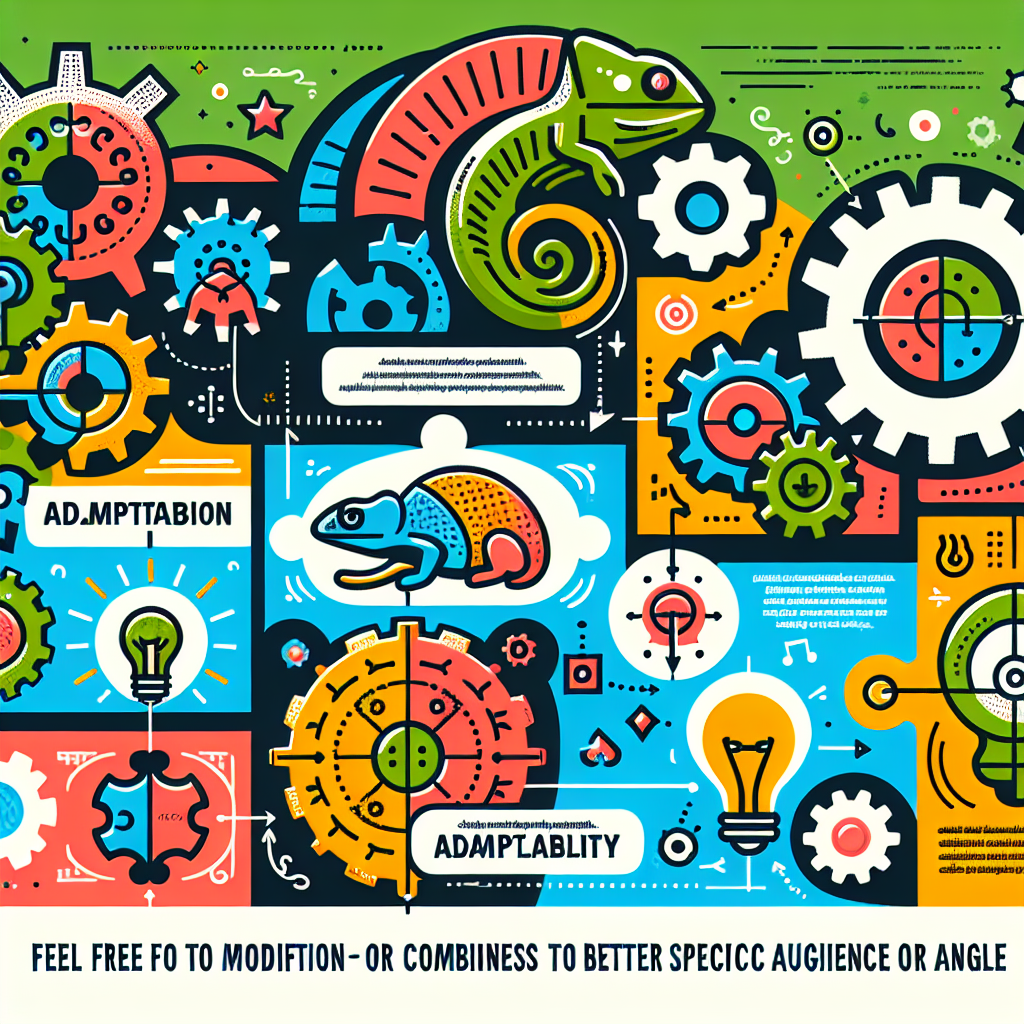Embracing Adaptability: The Key to Effective Communication
In our fast-paced, ever-evolving world, effective communication remains a cornerstone of personal and professional success. However, achieving clarity and engagement in our messages can often be a challenge. One powerful strategy to enhance communication is the ability to modify and combine different approaches, tailoring your message to fit your audience or specific context. This article explores why adaptability is crucial in communication and offers actionable suggestions to help you refine your message for maximum impact.
Understanding Your Audience
Every successful communication starts with a deep understanding of the audience. Who are they? What are their interests, values, and preferences? The more you know about your audience, the better equipped you are to modify your message. Here are some key considerations:
-
Demographics: Consider age, profession, education level, and cultural background. Younger audiences may prefer a more casual tone and relatable references, whereas older audiences might appreciate a more formal approach.
-
Interests and Values: Tailor your message to resonate with what matters most to your audience. For instance, if you’re addressing environmental advocates, incorporating sustainability practices into your communication will engage them more effectively.
- Context: The setting in which your communication takes place can greatly influence how your message is received. A casual conversation over coffee will differ vastly from a formal presentation in a boardroom.
Combining Approaches for Clarity
Combining different communication styles and techniques can help clarify your message and keep your audience engaged. Here are some strategies to consider:
-
Storytelling: Personal anecdotes and narratives can bring abstract concepts to life. Combining data with storytelling can create a compelling message that resonates emotionally. For example, while presenting statistics on climate change, share a personal story about how it has impacted your community.
-
Visual Aids: Integrating visuals like infographics, videos, or slides can enhance your communication, especially for complex information. For instance, if you are explaining a new product, combining a live demo with a PowerPoint presentation can cater to both visual and auditory learners in your audience.
- Interactive Elements: Engaging your audience through questions or live polls can foster a more interactive environment, breaking down barriers between the speaker and the audience. This approach can be particularly effective in workshops or training sessions, allowing participants to share their thoughts and feedback in real-time.
Modifying Your Tone and Language
The way you deliver your message is just as important as the content itself. Adjust your tone and language based on the situation to ensure your message is received as intended:
-
Formal vs. Informal: Assess the nature of your communication. In a formal business meeting, a polished and professional tone is key, while a casual team gathering may allow for a more relaxed and conversational tone.
-
Jargon and Complexity: Avoid jargon and overly technical language if your audience may not be familiar with the terminology. Simplifying complex ideas not only enhances understanding but also fosters inclusivity.
- Empathy and Emotion: Adding an element of empathy can significantly improve your connection with the audience. Acknowledging their feelings or concerns can make your message more relatable and trustworthy.
The Art of Feedback
Finally, continuous improvement is vital in any communication strategy. Solicit feedback from your audience to understand what resonates and what doesn’t. This not only helps you polish your approach but also builds a rapport with your audience, showing them that their opinions matter.
Conclusion
In conclusion, effective communication is not a one-size-fits-all endeavor. By embracing adaptability—modifying and combining different techniques based on your audience and context—you can enhance the clarity and impact of your messages. Remember, understanding your audience, utilizing storytelling and visuals, adjusting your tone and language, and seeking feedback will bridge gaps in communication, paving the way for meaningful connections in both personal and professional realms. So, the next time you prepare to communicate, don’t hesitate to modify and combine your strategies to fit your audience; it could be the key to your success.




